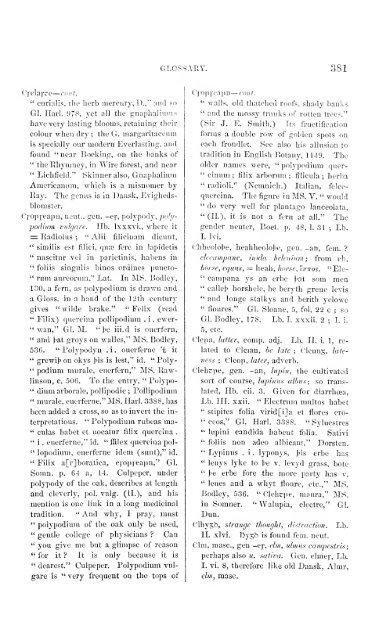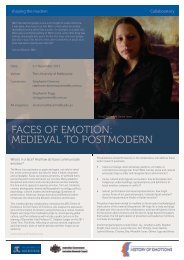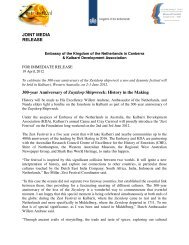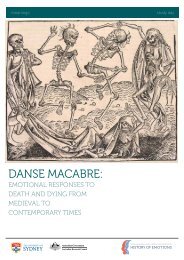Leechdoms, wortcunning, and starcraft of early England. Being a ...
Leechdoms, wortcunning, and starcraft of early England. Being a ...
Leechdoms, wortcunning, and starcraft of early England. Being a ...
Create successful ePaper yourself
Turn your PDF publications into a flip-book with our unique Google optimized e-Paper software.
—<br />
GLOSSARY. 381<br />
Gyelaf-e<br />
ccwt.<br />
curialis, the herb mercury, D.," nnd so<br />
*'<br />
Gl. Harl. 978, yet all the gnaphaliums<br />
have very lasting blooms, retaining their<br />
colour when dry ; the G. margaritaceum<br />
is specially our modern Everlasting, <strong>and</strong><br />
found " near Bocking, on the banks <strong>of</strong><br />
" the Rhymney, in Wire forest, <strong>and</strong> near<br />
" Lichfield." Skinner also, Gnaphalium<br />
Americanum, which is a misnomer by<br />
Ray. The genus is in Dausk, Evighedsblomster.<br />
Cjopyeapn, neut., gen. -ey, polypody, poli/-<br />
poditim vuJgare. Hb. Ixxxvi., where it<br />
= Radiolus ;<br />
" Alii filicinam dicunt,<br />
" similis est filici, qum fere in lapidetis<br />
" nascitur vel in parietinis, habens in<br />
" foliis singulis binos ordines puncto-<br />
" rum aureormn," Lat. In MS. Bodley,<br />
130, a fern, as polypodium is drawn <strong>and</strong><br />
a Gloss, in a h<strong>and</strong> <strong>of</strong> the 12th century<br />
gives "wilde brake." "Felix (read<br />
" Filix) queirciua poUipodium . i . ewer-<br />
" wan," Gl. M. ">e iii.d is ouerfern,<br />
" <strong>and</strong> t-at groys on walles," MS. Bodley,<br />
536. " Polypodyn . i . ouerferne 't it<br />
" grewitj on okys \>is is lest," id. " Poly-<br />
" podium murale, euerfern," MS. Rawlinson,<br />
c. 506. To the entry, " Polypo-<br />
" dium arborale, pollipodie ; PoUipodium<br />
" murale, euerferne," MS. Harl. 3388, has<br />
been added a cross, so as to invert the interpretations.<br />
" Polypodium rubeas ma-<br />
" culas habet et uocatur filix quercina .<br />
" i . euerferne," id. " ffilex quercina pol-<br />
*'<br />
lopodium, euerferne idem (sunt)," id.<br />
" Filix a[r]boratica, ejojijreapn," Gl.<br />
Somn. p. 64 a, 14. Culpeper, under<br />
polypody <strong>of</strong> the oak, describes at length<br />
<strong>and</strong> cleverly, pol. vulg. (H.), <strong>and</strong> his<br />
mention is one link in a long medicinal<br />
tradition. "And why, I pray, must<br />
" polypodium <strong>of</strong> the oak only be used,<br />
" gentle college <strong>of</strong> physicians Can<br />
" you give me but a glimpse <strong>of</strong> reason<br />
*'<br />
for it It is only because it is<br />
" dearest." Culpeper. Polypodium vulgare<br />
is "very frequent on the tops <strong>of</strong><br />
ej-op]-ea]in— cont.<br />
" walls, old thatched ro<strong>of</strong>s, shady banks<br />
" <strong>and</strong> the mossy trunks <strong>of</strong> rotten trees."<br />
(Sir J. E. Smith.) Its fructification<br />
forms a double row <strong>of</strong> golden spots on<br />
each frondlet. See also his allusion to<br />
tradition in English Botany, 1 149. The<br />
older names were, "polypodium quer-<br />
" cinum ; filix arborum ; filicula ; herba<br />
ehheolo>e, heahheolo)'e, gen. -an, fem. <br />
elecampane, inula heleninm; from eh,<br />
" radioli." (Nemnich.) Italian, felcequercina.<br />
The figure in MS. V. " would<br />
" do very well for plantago lanceolata,<br />
" (H.), it is not a fern at all." The<br />
gender neuter, Boet. p. 48, 1. 31 ; Lb.<br />
L Ivi.<br />
horse, equus, = heah, horse, "ttttos. "Ele-<br />
" campana ys an erbe \>at som men<br />
" callej> horshele, he beryth grene levis<br />
" <strong>and</strong> longe stalkys <strong>and</strong> berith yelowe<br />
" fioures." Gl. Sloane, 5, fol. 22 c ; so<br />
Gl. Bodley, 178. Lb. I. xxxii. 2 ; L i.<br />
5, etc.<br />
eicpa, latter, comp. adj. Lb. II. i. 1, related<br />
to elcian, be late ; Clcung, late-<br />
7iess ;<br />
elcop, later, adverb.<br />
elehrpe, gen. -an, lupin, the cultivated<br />
sort <strong>of</strong> course, lupinut) albus; so translated,<br />
Hb. cii. 3. Given for dian-hoea,<br />
Lb. III. xxii. " Electrum multos habet<br />
" stipites folia virid[i]a et fiores cro-<br />
" ceos," Gl. Harl. 3388. " Syluestres<br />
'•<br />
lupini C<strong>and</strong>ida habent folia. Sativi<br />
" foliis non adeo albicant," Dorsten.<br />
" Lypinus . i . lyponys, ]>m erbe has<br />
" leuys lyke to t^e v. levyd grass, bote<br />
" }>e erbe fore the more party has v.<br />
" leues <strong>and</strong> a whyt floure, etc.," MS.<br />
Bodley, 536. " Clehtpe, maura," MS.<br />
in Somner. "Walupia, electre," GL<br />
Dun.<br />
elhygb, strange thought, distraction. Lb.<br />
n. xlvi. >ysb is found fem. neut.<br />
elm, masc, gen -ef, elm, ulmus campestris;<br />
perhaps also u. sativa. Gen. elmef, Lbv<br />
I. vi. 8, therefore like old Dansk, Almr,<br />
elm, masc.












